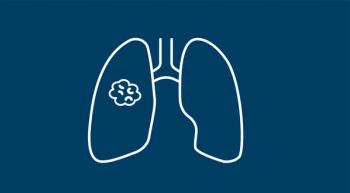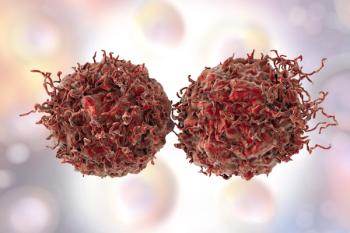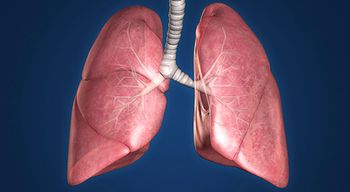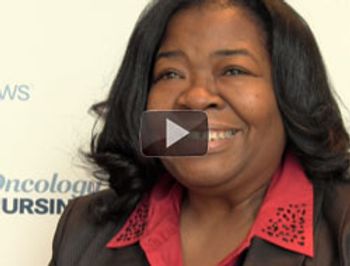
La-Urshalar Brock, FNP-BC, CNM, describes tactics for managing dermatologic AEs in patients with breast cancer as part of a multidisciplinary care team.

La-Urshalar Brock, FNP-BC, CNM, describes tactics for managing dermatologic AEs in patients with breast cancer as part of a multidisciplinary care team.

Black patients with multiple myeloma may be at a higher-risk for bortezomib-induced peripheral neuropathy compared with non-Black patients.

Patients with relapsed/refractory multiple myeloma treated with elranatamab following any prior BCMA-directed therapy achieved an overall response rate of 46%.

Patients with metastatic breast cancer who received ribociclib plus fulvestrant achieved a median progression-free survival of 18.1 months vs 5.29 months with placebo/fulvestrant.

La-Urshular Brock, MSN, FNP-BC, CNM, discusses how a better understanding of HER2-low status may necessitate more testing for certain patients with breast cancer.

La-Urshalar Brock, MSN, FNP-BC, CNM, discusses HER2 status and its implications for patients with breast cancer.

Kathryn Maples, PharmD, BCOP, highlights recent approvals, and updated labeling, along with drug removals, across leukemia, lymphoma, and multiple myeloma.

Olaparib is an oral drug manufactured in 150-mg and 100-mg tablets. Olaparib is taken by mouth, twice daily. It can be taken without or without food.

HER2-directed antibody-drug conjugates (ADCs) play an important role in the treatment of breast and gastric cancer.

At the 2022 ASCO Quality Care Symposium, researchers discussed how Medicaid expansion was tied to earlier diagnoses, more accessible palliative care, and decreased mortality rates for patients with cancer.

In this episode of "The Vitals," Sarah Donahue, MPH, NP, AOCNP; Jamie Carroll, APRN, CNP, MSN; Theresa Wicklin Gillespie, PhD, MA, RN, FAAN; and Elizabeth Prechtel-Dunphy, DNP, RN, ANP-BC, AOCN, exchange clinical pearls for treating patients receiving antibody-drug conjugates.

Regardless of other identified driver genomic alterations, patients with heavily pretreated, advanced, non–small cell lung cancer achieved encouraging responses with patritumab deruxtecan.

La-Urshala Brock, FNP-BC, CNM, RNFA, discusses effective toxicity management for patients with breast cancer receiving pembrolizumab.

Radiotherapy treatment has continued to evolve to become both shorter and faster in potentially curing prostate cancer.

Investigators are looking to evaluate whether immunotherapy in the frontline setting, with or without chemotherapy, might improve prognoses for advanced esophageal squamous cell carcinoma.

Christopher Zorn, clinic operations administrator of Winship Cancer Institute at Emory University, discusses how Winship Cancer Institute fosters a safe, yet festive, holiday environment during the COVID-19 pandemic.

In this episode of “The Vitals,” 2 health care professionals discuss how to safely celebrate the holidays in oncology units.

Patients with neuroendocrine tumors across various origins experienced favorable responses after receiving tidutamab.

Loop electrical excision procedure (LEEP) demonstrated superior capabilities in clearing high-risk HPV infections in women with cervical intraepithelial neoplasia (CIN2+).

Data from the pivotal phase 3 KATHERINE has led to the addition of ado-trastuzumab emtansine to the HER2-positive breast cancer treatment arsenal, but the toxicities associated with the approach must be appropriately managed so that patients can continue to receive it.

An Emory University-led phase 2 study will evaluate whether the the PI3K-gamma/delta inhibitor duvelisib is effective at reducing lung inflammation in patients with severe novel coronavirus 2019.

How does financial toxicity affect patients, and what can nurses do to help?

Deborah Watkins Bruner, RN, PhD, FAAN, discusses the results of a trial comparing quality of life after conventional radiotherapy and after a hypofractionated schedule for men at low-risk for prostate cancer.

Deborah Watkins Bruner advises nurses on how they can help patients with cancer who are struggling financially.

The American Cancer Society estimates that almost 14.5 million cancer survivors are alive in the United States today. By 2024, the number of survivors will grow to almost 19 million.

For the over 1.5 million individuals expected to be diagnosed with cancer in 2015, pain can be a significant problem.

Deborah Watkins Bruner, PhD, RN, FAAN, from the Nell Hodgson Woodruff School of Nursing at Emory University, discusses side effects associated with platinum-based drugs for the treatment of ovarian cancer.

Deborah Watkins Bruner, PhD, RN, FAAN, professor, Nell Hodgson Woodruff School of Nursing, Emory University, discusses differences between physician and patient reports of toxicity.

Once a terminal illness, HIV is now considered a chronic disease due to the advances in highly active antiretroviral treatment (HAART).

Gwendolynn Harrell, RN, Palliative Care Nurse Liaison, Supportive Oncology Care Team, Emory University, discusses a study that examined symptom clustering among patients visiting a supportive oncology clinic.